VEXA is a tool to show the beginning and the end of optical exposure within every single video field of a PAL or NTSC video camera or video modul.
Test camera was my CCIR video modul SK1004XC/SO. This modul runs only with 50 fields per second and in automatic exposure mode. Measurements were made inside a room in daylight conditions but on a shaded working table.
It should be noted that high accurate measurements should be made in a closed room with artifical light sources. Daylight brightness can change within few minutes hence results of a camera with automatic gain would also be changeing. Due to sensor sensibility depends on wavelengths the use of different light sources with their typical wavelengths can also produce different results.
Most automatic gain controls are working with hysteresis. So a short variation of illumination can result in a different exposure time althought the previous illumination is working now again.
But if it is not necessary to take results with very high accuracy, measurements with VEXA can be done in normal environment and within few minutes.
A typical measurement sequence in six images
(LEDs in both fields Odd and Even ON)
Mode 00: range = 0 - 20ms, LED step = 2ms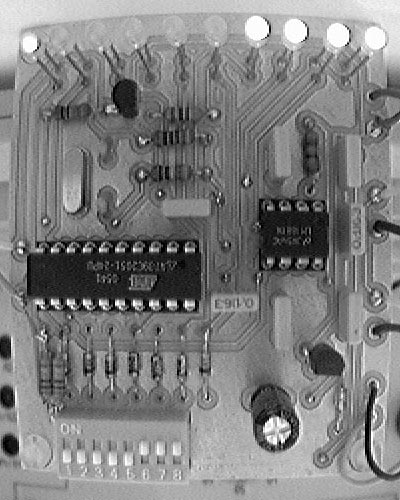 | Mode 00 ist the first step to begin the measurements with an overview. The first LED1 on the left side is also lit so the image showes that there is an offset between internal exposure window and V_sync output. The total of exposure time is shown by all of the lit LEDs (1x2ms + 4x2ms) and at the moment one can say in total it will be around 10ms. The next steps will be to determine the offset time between internal exposure window and V_sync output. Therefor modes have to be choosen that will show the left LED1 time in a higher resolutuion. | |
| ||
Mode 14: range = 0 - 2ms, LED step = 200us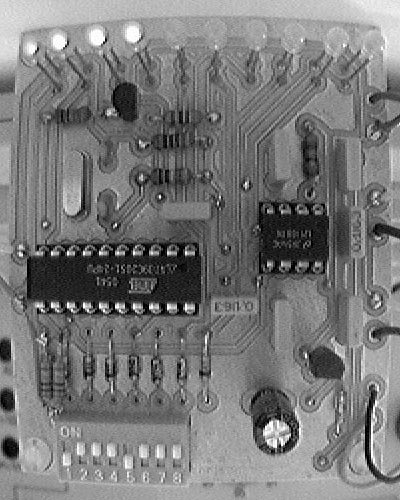 | Mode 14 now shows with higher resolution that the offset time is not 2ms like the image of Mode 00 indicated before. One can see the offset rather seems to be somewhere in the range of 600 - 800us. In next step we will measure with higher time resolution in mode 21. | |
| ||
Mode 21: range = 0 - 1ms, LED step = 100us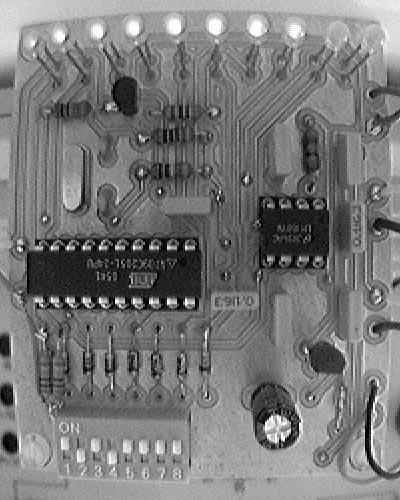 | Mode 21 shows with a resolution of 100us that the offset time is in the range of 700 - 800us. In next mode 27 we will measure again with higher time resolution but additionally with an offset of 720us. | |
| ||
Mode 27: range = 720 - 920us, LED = step 20us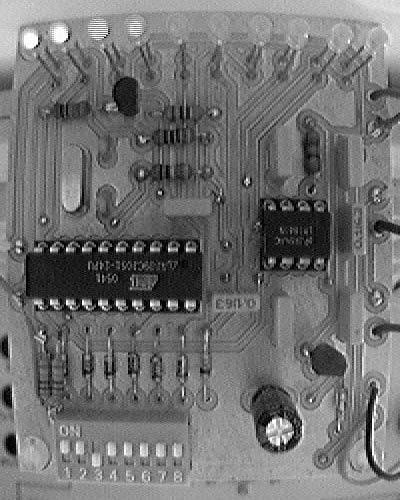 | Mode 27 shows with maximum resolution of 20us that the offset time is somewhere in the range of 780 - 800us. In the meantime the LED brightness was due to short lit time adjusted manually to maximum. And it is visible that LED3 and LED4 are not captured in full brightness. They are looking striped as they would look in only one (Odd or Even) exposured field. There are two real reasons for this impression. Due to different starting points the time offset of V_sync is different in Odd and Even fields and the brightness of the LEDs is to low for recording in full. | |
| ||
Mode 02: range = 5 - 15ms, LED step = 1ms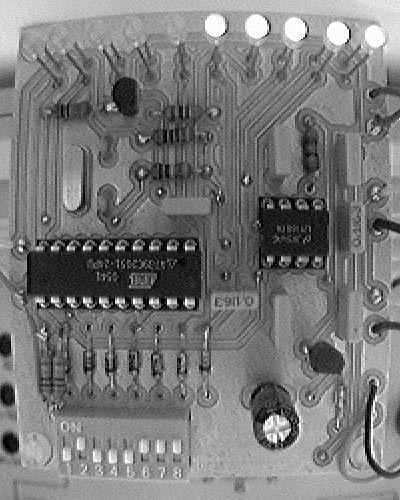 | After determining the offset between internal exposure window and V_sync output and the last microseconds of exposure window in the modes 14, 21 and 27 we now can measure the rest of the total exposure window. Remember, Mode 00 image on top showed an exposure time of nearly 4x2ms = 8ms in the range of 12 - 20ms at the end of the LED row. But Mode 02 now shows that LEDs in the range from 10 - 15 ms are lit. What happened? There is a very simple explanation. The environment brightness changed due to daylight change since measurement in mode 00. So here we have LED6 - LED10 lit in the range of 10-15ms. | |
| ||
Mode 06: range = 7 - 12ms, LED step = 500us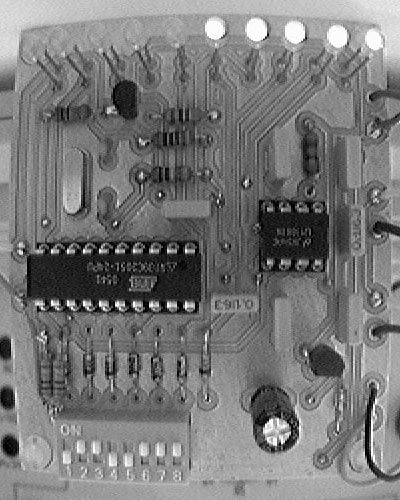 | In mode 06 a higher resolution with 500us is used. But again a change in exposure begin is noticeable. Now the exposure window starts at nearby 9.5ms.
What is now the conclusion? The offset between internal exposure window and V_sync output is in the range of 780 - 800us. Total exposure time now at the end was 10.5ms + offset time that means around 11.3 milliseconds. To refine the results another mesurements in modes odd and even should be taken. | |
| ||
05. August 2006 |
|
Site Home |